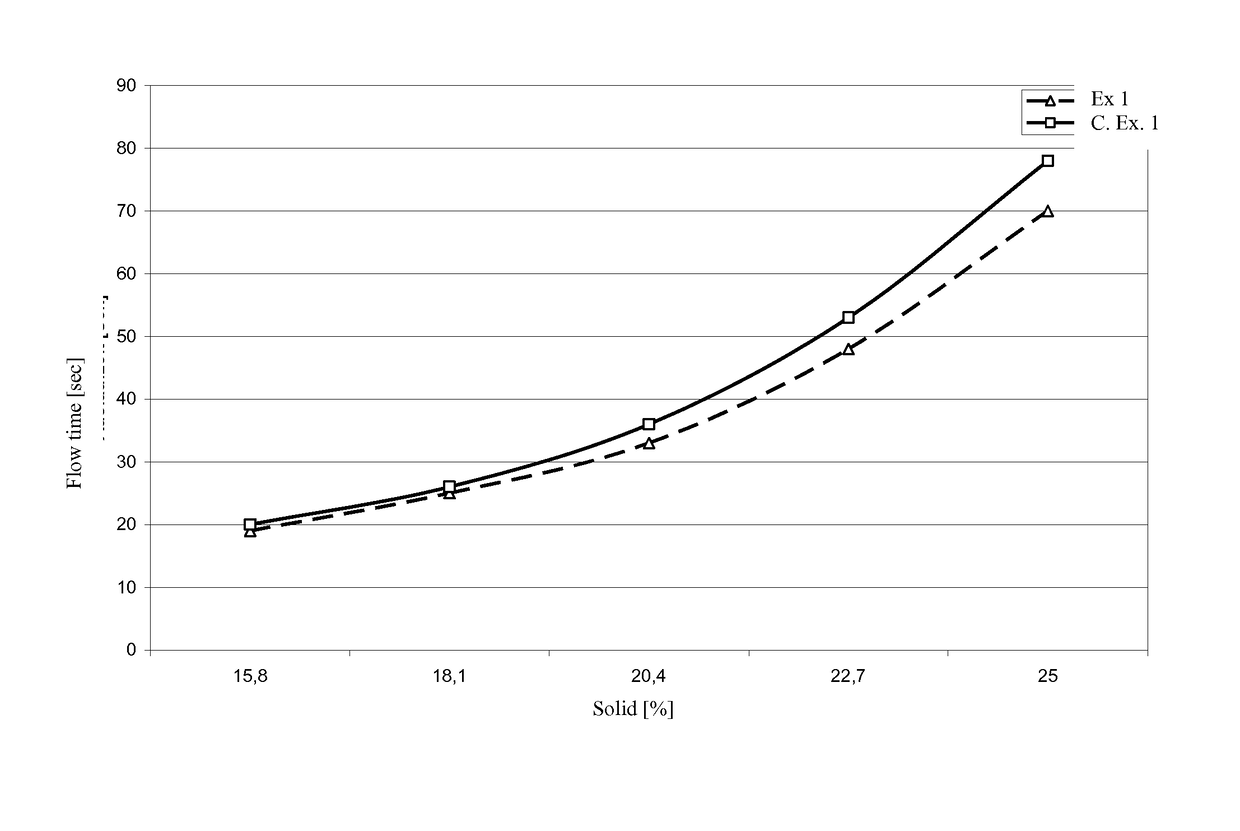Use of polymer isoacetals in printing ink formulations
a technology of polyvinyl isoacetals and printing inks, applied in the field of polyvinyl isoacetals, can solve problems such as no technical significance, and achieve the effect of low viscosity
- Summary
- Abstract
- Description
- Claims
- Application Information
AI Technical Summary
Benefits of technology
Problems solved by technology
Method used
Image
Examples
example 1
[0043]540 g polyvinyl alcohol with a viscosity (4% in water) of 3.06 mPas and a degree of hydrolysis of 96.5 mol % were dissolved in 6660 ml water. After adding 340 g iso-butyraldehyde, the reaction was started at 4° C. with the addition of 870 ml 20% hydrochloric acid solution. Once the hydrochloric acid had been added, the reaction solution was heated over a period of 2 hours to 36° C. and was kept at this temperature for a further 2 hours. The precipitated solid was filtered off and washed sufficiently with water. For the purposes of neutralization or alkalization, the product suspension was mixed with 20 ml 10% sodium hydroxide solution and slightly heated again.
example 2
[0045]684 g polyvinyl alcohol with a viscosity (4% in water) of 4.60 mPas and a degree of hydrolysis of 98.5 mol % were dissolved in 6516 ml water. After adding 394 g iso-butyraldehyde, the reaction was started at 4° C. with the addition of 820 ml 20% hydrochloric acid solution. Once the hydrochloric acid had been added, the reaction solution was heated over a period of 2 hours to 44° C. and was kept at this temperature for a further 1.5 hours. The precipitated solid was filtered off and washed sufficiently with water. For the purposes of neutralization or alkalization, the product suspension was mixed with 20 ml 10% sodium hydroxide solution and slightly heated again. Excess lye was removed by washing with water. The product was then dried.
example 3
[0047]684 g polyvinyl alcohol with a viscosity (4% in water) of 9.94 mPas and a degree of hydrolysis of 98.4 mol % were dissolved in 6552 ml water. After adding 400 g iso-butyraldehyde, the reaction was started at 4° C. with the addition of 780 ml 20% hydrochloric acid solution. Once the hydrochloric acid had been added, the reaction solution was heated over a period of 2 hours to 48° C. and was kept at this temperature for a further 2 hours. The precipitated solid was filtered off and washed sufficiently with water. For the purposes of neutralization or alkalization, the product suspension was mixed with 20 ml 10% sodium hydroxide solution and slightly heated again. Excess base was removed by washing with water. The product was then dried.
PUM
| Property | Measurement | Unit |
|---|---|---|
| temperature | aaaaa | aaaaa |
| temperature | aaaaa | aaaaa |
| temperature | aaaaa | aaaaa |
Abstract
Description
Claims
Application Information
 Login to View More
Login to View More - R&D
- Intellectual Property
- Life Sciences
- Materials
- Tech Scout
- Unparalleled Data Quality
- Higher Quality Content
- 60% Fewer Hallucinations
Browse by: Latest US Patents, China's latest patents, Technical Efficacy Thesaurus, Application Domain, Technology Topic, Popular Technical Reports.
© 2025 PatSnap. All rights reserved.Legal|Privacy policy|Modern Slavery Act Transparency Statement|Sitemap|About US| Contact US: help@patsnap.com

